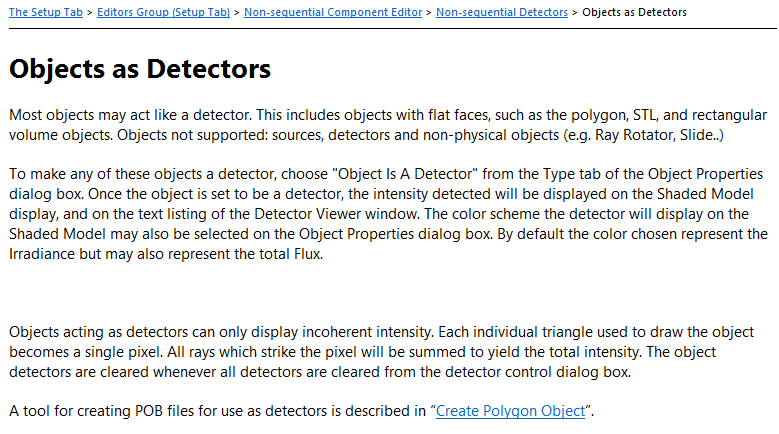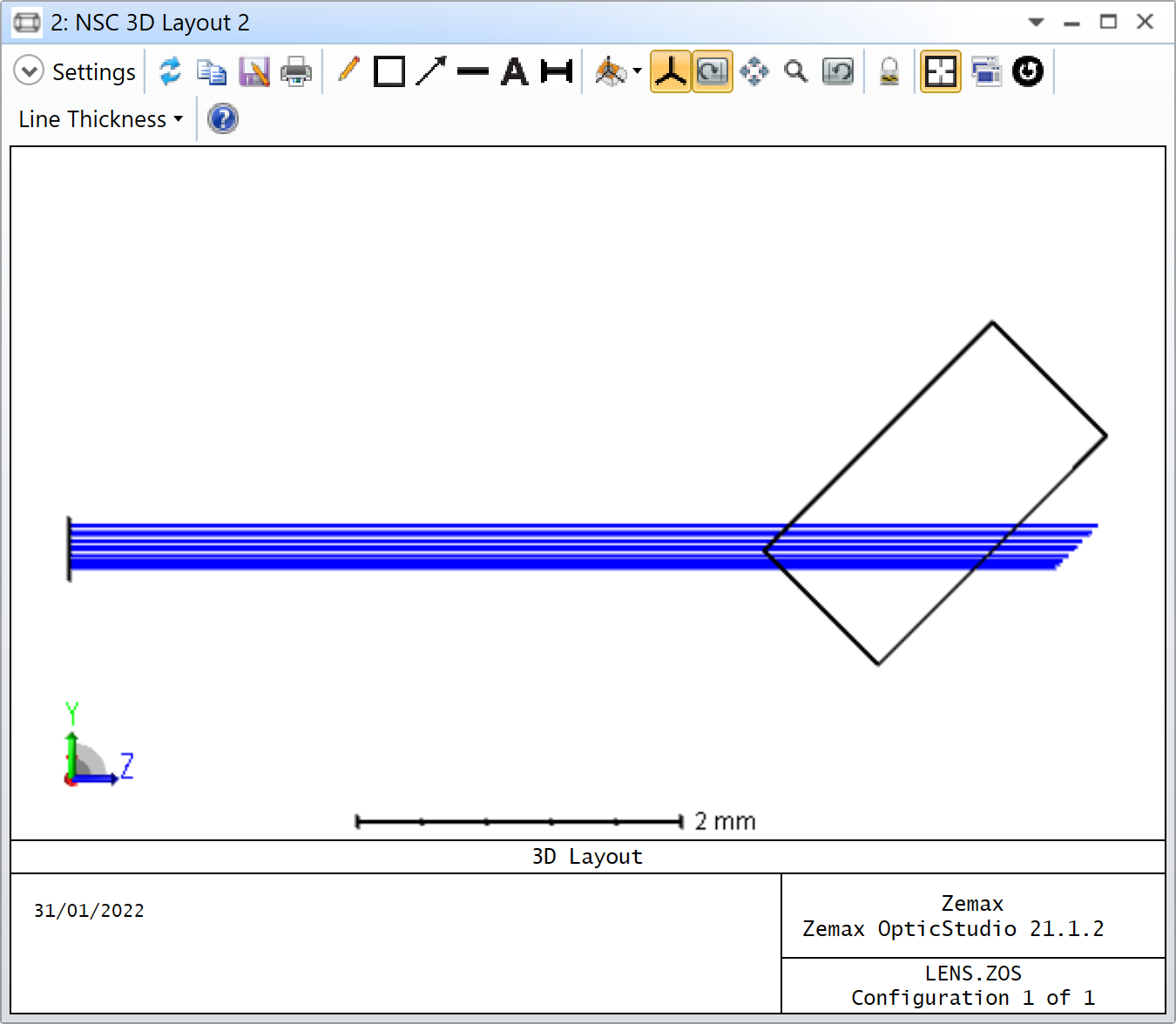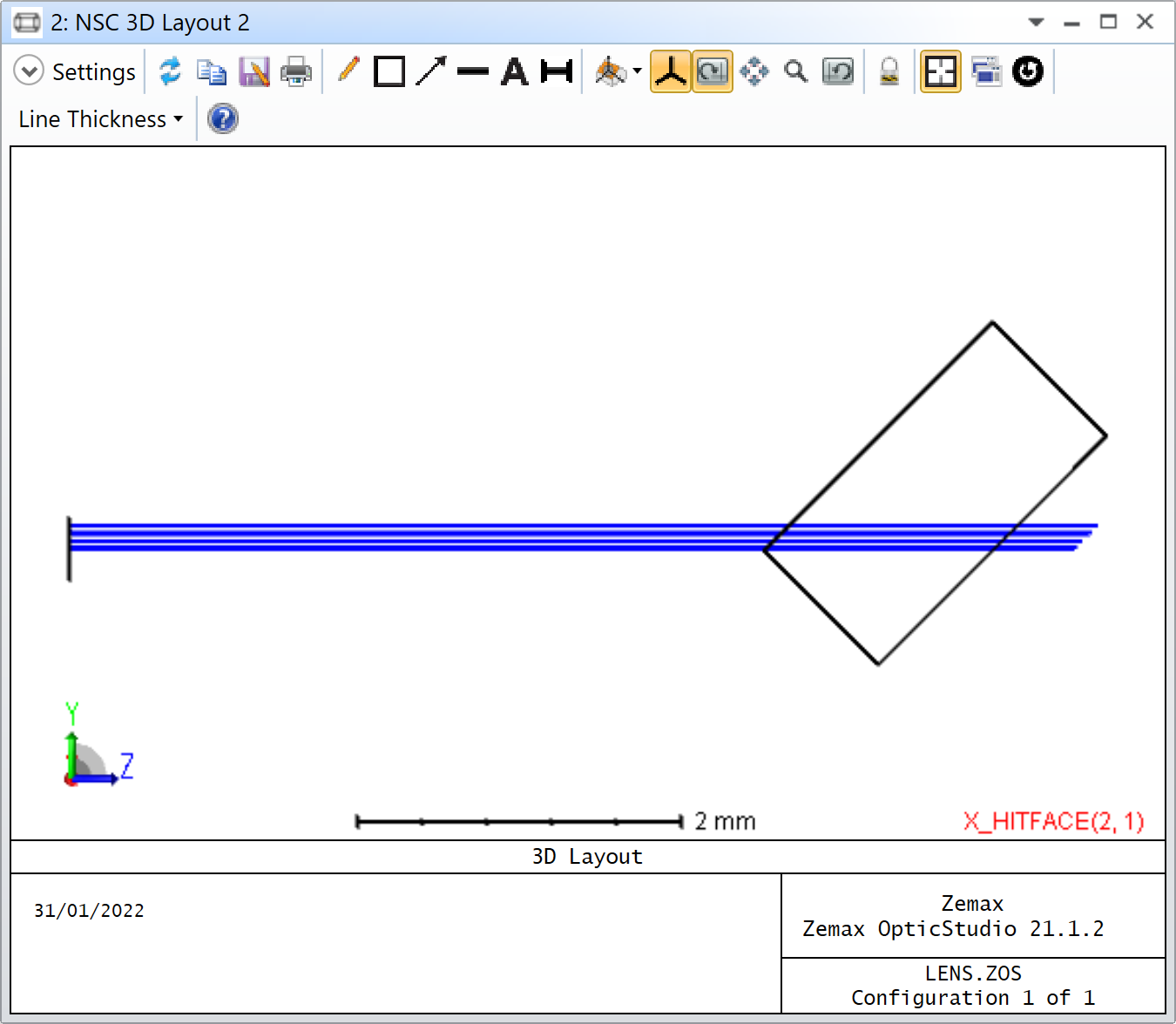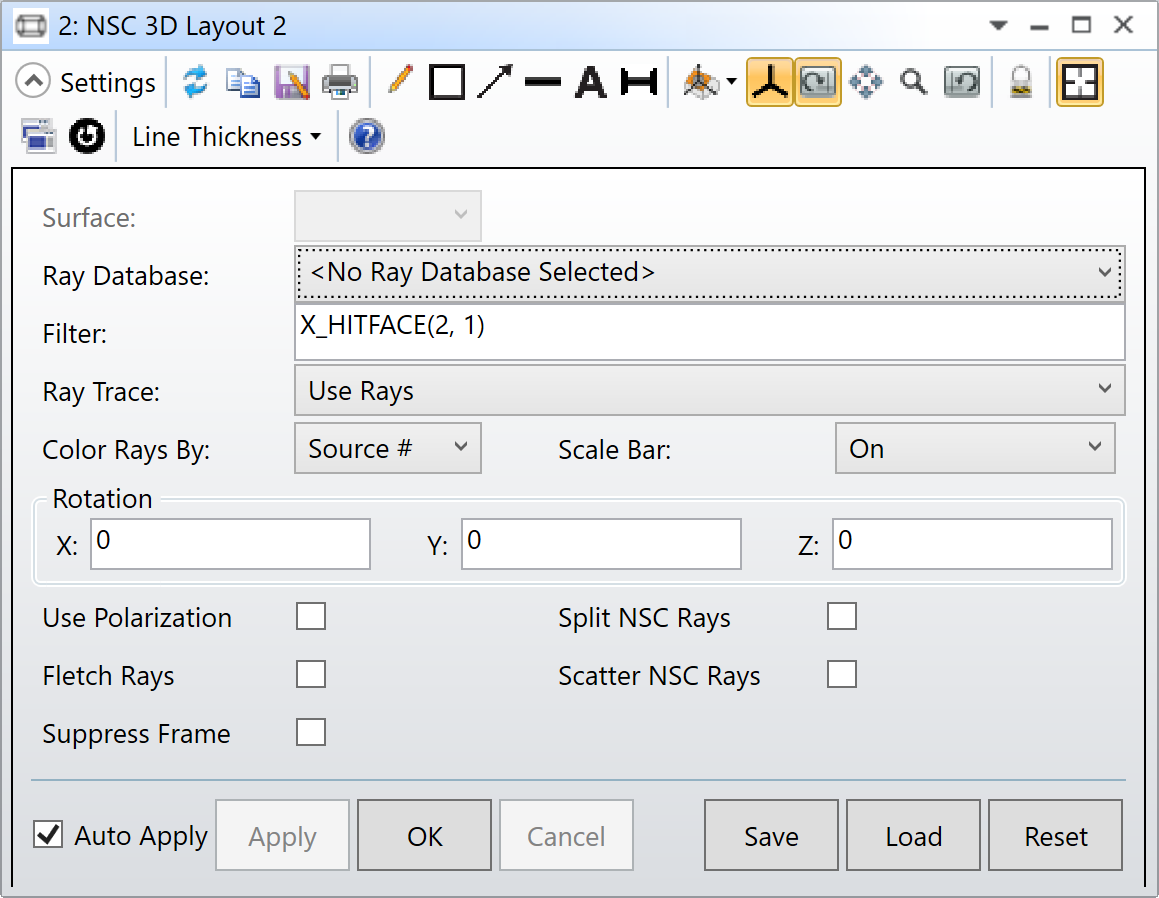Hi Zemax Community,
what’s the best/easiest way to detect rays hitting the back side of a reflective object? It’s a pretty complex Non-sequential system with a source, primary detector and many “parallel” objects in between. I’m trying to understand the losses due to 1) objects blocking rays reflected from another object and preventing them from reaching the primary detector and 2) objects shading other objects and preventing rays from reaching the other objects, to be reflected to the primary detector.
One idea for the blocking instances is to create a set of separate, absorbing detectors just off the backsides of the reflective objects. This would work and be a bit cumbersome. Maybe there’s an easier way? Can a reflective object have dual properties on each face? Or?
Any thoughts would be appreciated.
Thanks,
Josh











